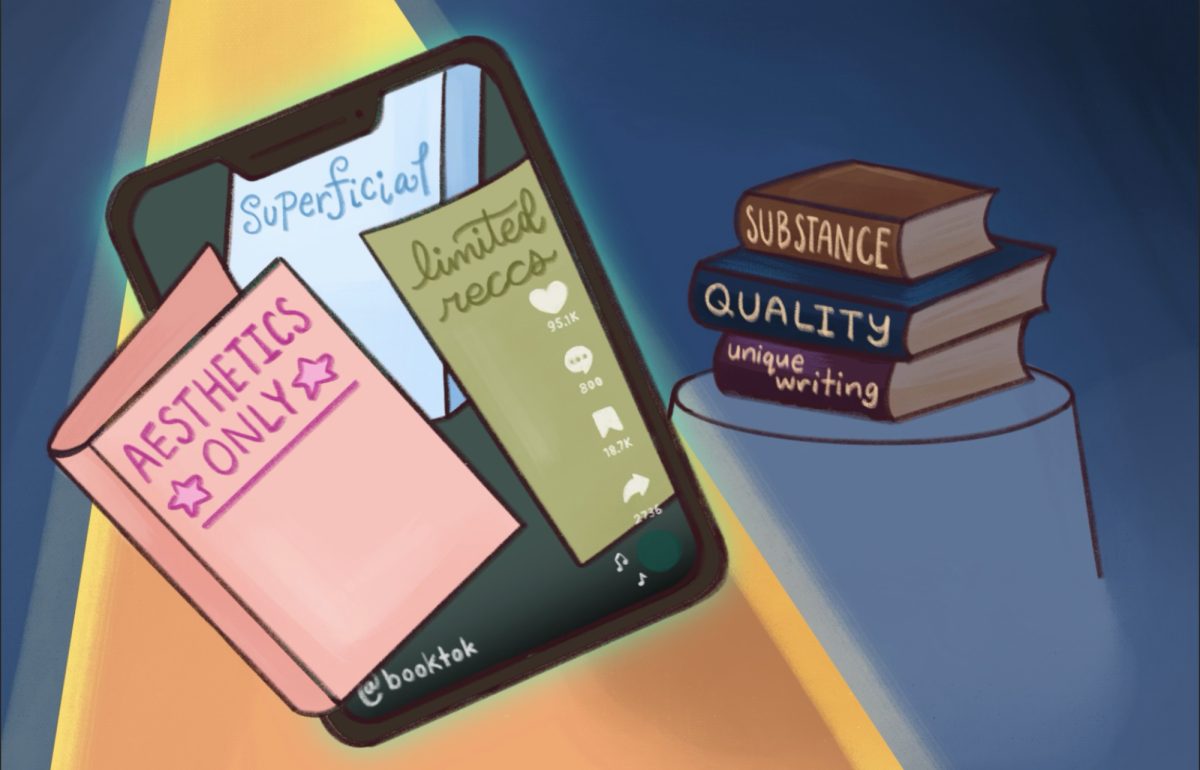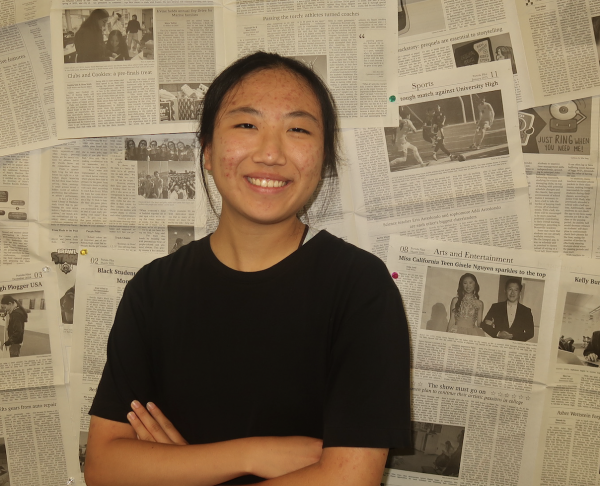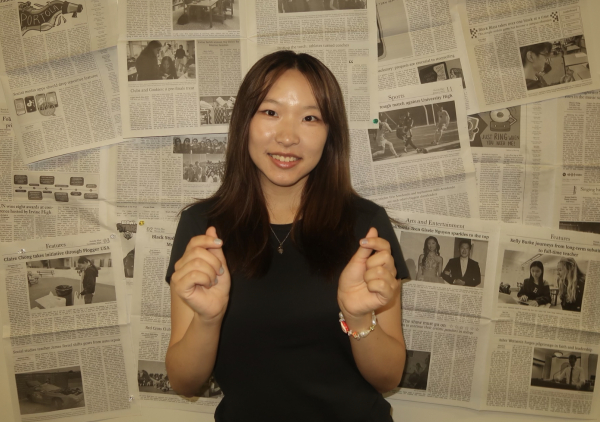Searching for a wildean fantasy, twisted dystopian epic or by-the-fireplace novella but just can’t find the one? Look no further than BookTok, the newest and most spellbinding obsession for readers across the internet.
Comprised mostly of reviews, recommendations and visual edits, BookTok is an online community using TikTok to promote book reading in a generation that is growing increasingly distant from literature, according to the American Academy of Arts and Sciences. Readers are overwhelmingly drawn to the aesthetic of BookTok videos, often comprised of edits of Pinterest photos.
Despite BookTok’s new role as the courier of fresh and exciting reads, the community often provides a platform to the romanticization of problematic content and aesthetics. Readers should be cognizant of the content that they consume by approaching them more critically and reflectively. To ensure this approach, young readers can turn to alternatives such as visiting a local library.
Perhaps the most prominent symptom of BookTok readers’ lack of reflection is their tendency to glamorize harmful tropes by promoting romance often marketed as “dark” or “toxic” to draw in a predominantly female audience, according to the Michigan Daily. This can glamorize sensitive subjects like abuse or non-consent for young readers, making them seem acceptable, according to senior Zara Hommez.
BookTok’s problems extend beyond contemporary potboiler romances. In addition to setting unrealistic expectations of relationships, Booktok also promotes an unhealthy obsession with Western classics. Take dark academia: a bookish aesthetic framed after gothic English libraries and the tortured souls of classics students. Under this subculture, older novels such as “The Secret History” and “The Picture of Dorian Gray” were repopularized, their aesthetics taken out of context to fetishize an elitist European lifestyle. Followers of this side of BookTok are drawn to romanticize an intellectual culture historically provided only to white male students, an obsession that is largely unachievable today for young students, according to Post45.
Despite its faults, BookTok undeniably expanded readership since its 2020 inception, more than doubling sales in the first two years according to Publishers Weekly. This increase corresponded with a growth of community within younger readers, with 59% of teens and young adults reporting revitalized interest in reading due to BookTok.
“It gives book lovers a place to go and be together,” librarian Amy Linehan said. “It makes reading cool. And it helps to form a sense of community, like a place where people can talk about the same interests and feel like they belong and get to share that with someone.”
Though BookTok provides a platform for readers to socialize, the crux of reading is the ability to interpret and look at a work mindfully and reflectively. Enjoying a piece of literature and engaging in its community space is not mutually exclusive with being aware of its potential faults and separating its aesthetics from real life. Instead, young readers should look towards other sources as well as BookTok, such as libraries which may offer a more transparent view without the influence of aesthetics.
Lovers of BookTok literature should be able to read to their hearts’ desires; what differentiates harmful versus beneficial readings lies in the audiences’ ability to view the work critically. To encourage reading where young readers delve beyond surface-level messages, being aware of both downfalls and positives of BookTok is crucial to keep literature both enriching and enjoyable.






